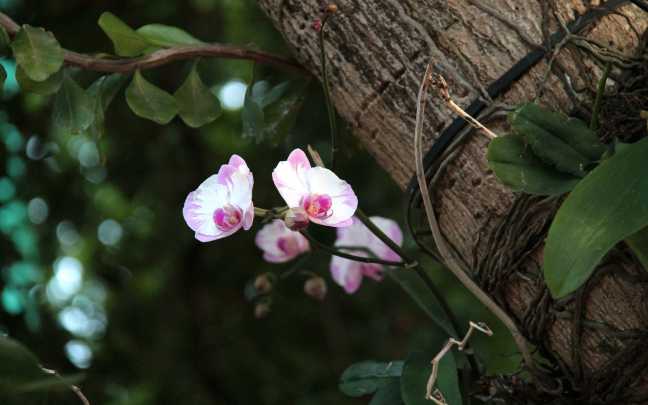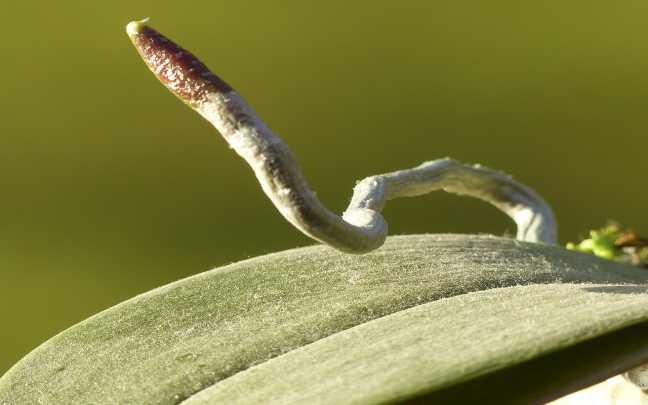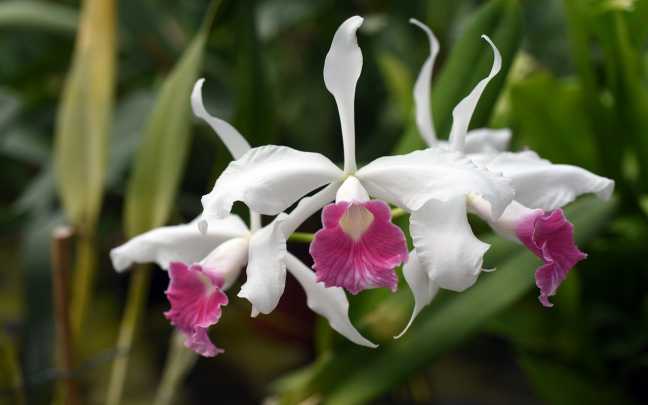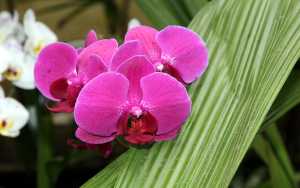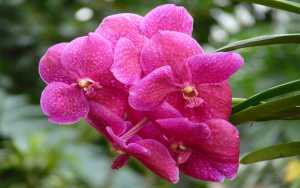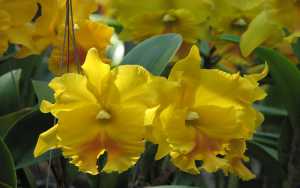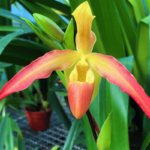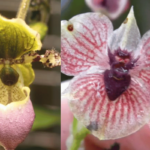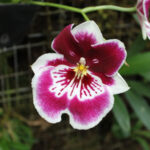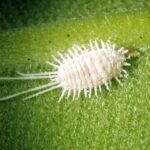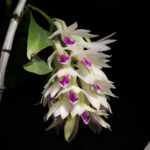Currently, epiphytic orchids represent the majority of cultivated orchid species.
In some cases, they are also known as air orchids, due to their suspended roots.
But before we delve into the details about this type of orchid, let’s learn a bit more about what epiphytes are.
The term “epiphyte” was coined in 1815 by C.F. Mirbel and comes from the combination of the Greek words epí (on) and phyto (plant), meaning, therefore, “on plant.” Epiphytism
The meaning of this name is something that will help you understand more about these plants.
Keep reading to learn:
Learn How to Achieve Super Blooms on Your Orchids
🛑 If you love orchids and you're tired of not being able to make them bloom...
Then, know that thousands of beginner growers are achieving beautiful flowers on their orchids by following this method.
Click the button below to have beautiful orchids with show-worthy flowers every year. ⤵
Characteristics
Epiphytic orchids are orchids that live on top of trees.
But it’s important to note that they don’t live as parasites, meaning, they don’t feed on the tree they are hosted on.
The tree serves only as support, meaning, the orchid does not harm the tree it’s on.
Thanks to the trunks and leaves, they receive indirect sunlight, preventing them from getting burned and allowing photosynthesis to occur.
As for their food, they obtain it from organic materials that fall near their roots, such as leaves.
Below, we’ll discuss a bit about the roots of these orchids.
If you want to see a comparison between the roots of epiphytic orchids and other types of orchids, check out the research below:
Roots
Over the years, the roots of these orchids evolved, so they could better adapt to the environment they live in.
And thanks to this evolution, they can easily absorb water and nutrients.
All of this happens thanks to the velamen that these orchids have.
Velamen in Orchids
Basically, the root is covered by a spongy structure known as velamen; this structure helps the orchid absorb water from the air.
Usually, a fungus called mycorrhiza resides within the velamen.
This fungus is responsible for the decomposition of organic matter in the environment, thus helping the orchid absorb these nutrients.
Simplifying everything about how epiphytic orchids get water and food:
- The velamen, which is a spongy structure covering the roots of orchids;
- The mycorrhiza fungus resides within the velamen;
- Both help the orchid obtain water from the air and food from organic matter in the environment.
To learn more about how the mycorrhiza fungus acts in orchids, check out these articles:
- https://link.springer.com/article/10.1007/s00572-020-00934-2
- https://link.springer.com/referenceworkentry/10.1007/978-3-030-11257-8_7-1
Cultivation of Epiphytic Orchids
As mentioned earlier, there are many epiphytic orchids, potentially reaching thousands of genera with this characteristic.
Thus, the natural habitat varies greatly, as:
- Some live in tropical forests
- Some in swamps
- Others near mountains
And these are just a few of the possible natural habitats.
With this great diversity, cultivation needs will vary greatly, meaning, while one orchid likes a lot of humidity, another might die from it.
That’s why I recommend that you seek detailed information about the cultivation of your species, or try to mimic its natural habitat as much as possible.
NOTE: a tip that probably applies to the vast majority of epiphytes is that they like indirect sunlight.
Recommended for you:
- How to Take Care of Orchids
- 12 Rare Orchids You’ve Never Heard Of
- Spots on Orchid Leaves – Meanings and Treatments
Main Genera and Their Characteristics

Epiphytic orchids are the most numerous type of orchids in nature, with several species and genera falling under this plant type.
Below, you’ll learn a bit more about the main genera that have the majority of their species as epiphytes.
Phalaenopsis:
Phalaenopsis orchids, also known as butterfly orchids, are one of the most famous orchid genera.
It consists of 75 species, and its main difference from other orchids is its easy cultivation and the long duration of its flowering.
Phalaenopsis prefers to be planted in a transparent plastic pot, so its roots can undergo photosynthesis.
NOTE: do not plant them in soil.
As for watering, it’s recommended to check the color of the root, if it’s white, it’s time to water.
If it’s green, wait a bit longer.
Repotting is done on average every 2 years and is done to change the substrate or because the orchid has outgrown the current pot.
A great curiosity about these orchids is that you can control when they will bloom.
Meaning, if you have 3 or 4 phalaenopsis in your house, you can have flowers all year round.
If you want to learn this technique, just access the article moth orchids.
Vanda
Vandas are a bit more complicated to cultivate than phalaenopsis.
But they are not impossible.
For many people, the big problem with them is their size because the space occupied by a vanda could be used by 2 or 3 orchids.
Still, it’s a great genus to cultivate.
The genus contains 80 species, all originating from East Asia (especially Thailand).
The vanda orchid is almost always cultivated suspended in wire baskets, thus having its roots free.
They also don’t like substrates much; you can use them when the plant is small, but it’s not highly recommended.
To water them, simply observe the change in color of the roots, as done with phalaenopsis.
Do You Want to Learn How To Keep Your Orchids Healthy And Ready to Bloom Every Year?
So, I prepared a complete guide, step by step and illustrated, that will show you:
• The secrets to getting beautiful flowers every year
• How to fight and identify pests and diseases on your orchids
• THE MAGIC SUBSTANCE for orchids and how to use it
• And much, much more.
The great news is that the manual is now available at a super discount!!
But beware, it's only for the first buyers.
Click on MORE INFORMATION below and discover the secrets to show-worthy flowers. 👇
Cattleya
Genus with about 113 species, mainly native to South America.
Cattleyas have the largest number of hybrids among orchids, and their name was given in honor of William Cattley, who was the first cultivator of this species.
The flowers can be of various sizes and, on average, last from 10 to 30 days.
The ideal temperature for them is a warmer climate than other orchids, being ideal:
- 21ºC to 27ºC (70°F to 80.5°F) during the day
- 13ºC to 16ºC (55.5°F to 61°F) at night
They can tolerate higher temperatures, but it’s not recommended.
The ideal humidity is about 50% to 80%, this factor is ideal for the orchid to have good disease resistance.
The cattleya is one of the most famous genera in Brazil, with its main representative being Cattleya walkeriana.
Other Epiphytic Orchid Species
In addition to these orchids, there are several other species that are also epiphytic. Below, I’ve listed a small list with some of them.
- Catasetum Orchids
- Miltonia
- Zygopetalum
- Stenia
- Abdominea (rare orchid)
- Ansellia Africana
- Vanilla
- Acineta
- Aerangis
- Aetheorhyncha
- Alamania
- Angraecum
- Dendrobium
- Ascoglossum
- Bifrenaria
- Brassia
- Camaradin
- Chaseella
- Chilopogon (rare orchid)
- Isabelia
- Huntleya
- Guarianthe
- Gongora
- Sobralia
- Encyclia
- Earina
- Epidendrum
Conclusion
This was a brief article detailing a bit about what epiphytic orchids are.
It’s important to know that besides them, there are other types of orchid species such as:
- Ground Orchids
- Lithophytes Orchids.
- Saprophytic Orchids
Now it’s your turn, click on the icons below and share this article with your friends, because that way you help us bring more content here to the site.

